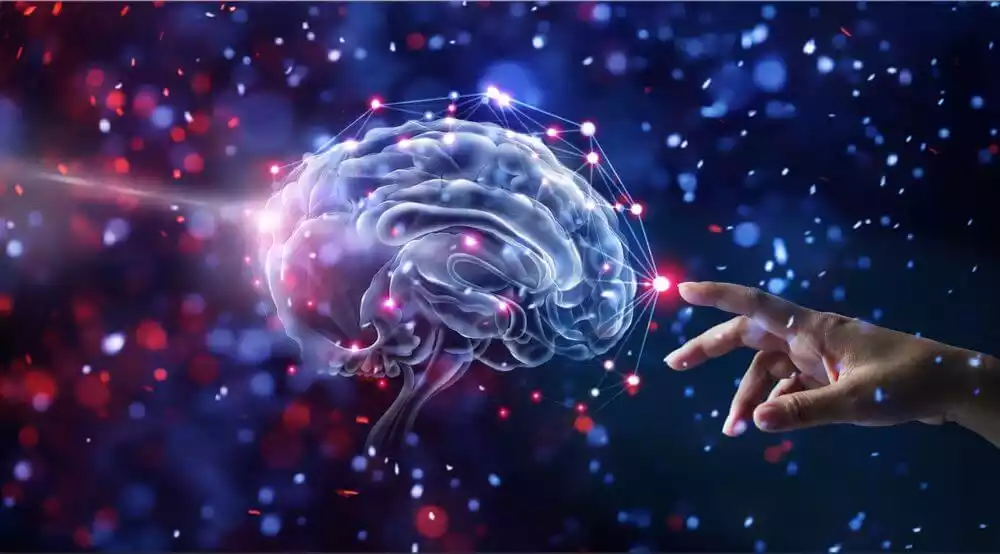Law of Attraction and Manifestation are two intriguing concepts that explore the relationship between thoughts, emotions, and the realization of desires. The Law of Attraction posits that like attracts like, emphasizing the power of positive thinking and focused beliefs to draw similar energy into one’s life. On the other hand, Manifestation involves the intentional shaping of reality through aligning thoughts, feelings, and actions with a desired outcome.
While both concepts share some similarities, they differ in their emphasis on beliefs, emotional states, and the role of actions in achieving goals. Understanding these differences can offer insights into how individuals approach creating the life they desire.
Law of Attraction

The Law of Attraction is a belief that states that the energy you put out into the universe, whether positive or negative, will be returned to you in kind. It suggests that your thoughts and emotions have the power to influence the events and circumstances that manifest in your life. According to this concept, focusing on positive thoughts and maintaining a strong belief in your desires can attract corresponding experiences, opportunities, and people.
Visualization, affirmations, and maintaining a consistently positive emotional state are often practiced to harness the Law of Attraction’s potential. While criticized for a lack of scientific evidence, proponents assert that the Law of Attraction can lead to improved well-being and success by shaping one’s mindset and outlook on life.
Manifestation

Manifestation is the intentional process of creating your desired reality by aligning your thoughts, emotions, and actions with your goals and intentions. It emphasizes the idea that you have the power to co-create your experiences and circumstances through conscious effort. Unlike the Law of Attraction, which can sometimes focus heavily on thoughts alone, manifestation emphasizes the importance of emotional alignment and taking purposeful actions that are in harmony with your intentions.
Techniques like setting clear intentions, practicing mindfulness, and expressing gratitude are often employed to enhance the process of manifestation. This concept is rooted in various spiritual and cultural traditions, highlighting the belief that our inner state influences the external world. Manifestation goes beyond simply attracting and extends to actively participating in the creation of your reality.
Importance of understanding the distinction between Law of Attraction and Manifestation
Understanding the distinction between the Law of Attraction and manifestation is crucial for several reasons:
- Clarity in Approach: Recognizing the differences helps individuals adopt a more informed and balanced approach to creating their desired outcomes. This prevents confusion and ensures that they are using the right techniques effectively.
- Effective Application: The Law of Attraction and manifestation each have their own principles and practices. Understanding these differences enables people to apply the right methods in the right contexts, increasing the likelihood of success.
- Avoiding Misconceptions: Confusing these concepts can lead to misunderstandings and misconceptions. Some might think that merely thinking positively will automatically lead to their desires, neglecting the importance of taking concrete actions.
- Accountability and Responsibility: Distinguishing between the two concepts reinforces the idea that while positive thinking and intention (Law of Attraction) are important, they must be coupled with actionable steps and responsibility (manifestation) for actual results.
- Realism and Practicality: Manifestation emphasizes the importance of setting clear goals and taking realistic steps towards achieving them. Understanding this distinction prevents the pitfall of setting vague intentions without a practical plan.
- Balancing Mindset and Action: Successful manifestation requires a balanced approach that acknowledges the power of mindset and thoughts (Law of Attraction) while recognizing the need for proactive effort and commitment (manifestation). This understanding helps individuals find harmony between these aspects.
- Personal Growth: Delving into both concepts allows individuals to engage in personal growth and self-discovery. They can develop a deeper understanding of their thoughts, emotions, beliefs, and actions, leading to more conscious and intentional living.
- Enhanced Decision-Making: Knowing the differences enables people to evaluate various personal development approaches critically. They can make informed decisions about which aspects of each concept resonate with them and align with their goals.
- Preventing Frustration: Without understanding the distinction, individuals might become frustrated if their desires don’t manifest as expected. They might blame themselves for not thinking positively enough, disregarding other important factors.
- Holistic Approach: Both the Law of Attraction and manifestation contribute to a holistic approach to personal development. Integrating these concepts helps individuals address multiple dimensions of their goals, including mindset, emotions, actions, and planning.
The Law of Attraction and manifestation empowers individuals to navigate their personal development journeys with wisdom and effectiveness, leading to a more balanced and fulfilling approach to achieving their aspirations.
Comparison Table of Law of Attraction and Manifestation
Here’s a simplified comparison table highlighting the key differences between the Law of Attraction and Manifestation:
| Aspect | Law of Attraction | Manifestation |
|---|---|---|
| Focus | Emphasis on attracting desired outcomes | Emphasis on consciously creating desired outcomes |
| Beliefs | Focus on belief in receiving | Focus on belief in co-creating reality |
| Emotional State | Positive emotions attract positive outcomes | Emotional alignment with intentions is crucial |
| Actions | Action is secondary; thoughts are primary | Aligned actions play a significant role |
| Approach | Mainly thought-based approach | Integrates thoughts, feelings, and actions |
| Techniques | Visualization, affirmations, positive thinking | Clear intentions, mindfulness, gratitude |
| Intent | Shaping external circumstances | Active participation in reality creation |
| Mindset | Positive thinking central to manifestation | Holistic approach encompassing inner growth |
| Scientific Backing | Lacks strong scientific evidence | Integrates subjective experiences and beliefs |
| Ethical Considerations | Potential criticism for victim-blaming | Encourages personal growth and ethical actions |
Keep in mind that these concepts can be interpreted and practiced in various ways, and individual experiences may differ. This table provides a general overview of the main distinctions between the Law of Attraction and Manifestation.
Real-life Examples and Case Studies
Here are a few real-life examples and case studies that illustrate the concepts of the Law of Attraction and Manifestation:
Law of Attraction:
- Jim’s Career Success: Jim, a firm believer in the Law of Attraction, consistently visualized himself excelling in his career. He focused on his skills, envisioned positive interactions with colleagues, and maintained an optimistic attitude. Over time, he received unexpected promotions and opportunities that aligned with his visualizations and positive mindset.
- Sarah’s Health Journey: Sarah, facing health challenges, used the Law of Attraction to aid her recovery. She focused on visualizing herself healthy, repeating affirmations of well-being, and fostering a hopeful outlook. While not a substitute for medical treatment, her positive mindset helped her stay motivated during her healing process.
Manifestation:
- Alex’s Business Venture: Alex wanted to start a business that aligned with his passion for sustainable living. He set clear intentions, practiced mindfulness to stay focused on his goals, and took small but consistent steps toward launching his venture. Through aligned actions and intentional decision-making, he successfully established a business that resonated with his values.
- Elena’s Relationship Manifestation: Elena sought to manifest a fulfilling romantic relationship. She engaged in self-reflection to identify her desires and emotional needs, used gratitude practices to cultivate a positive mindset, and actively participated in social events to meet new people. Eventually, she formed a meaningful connection with someone who shared her values and goals.
Comparative Analysis:
Both the Law of Attraction and Manifestation play roles in these examples, but the emphasis varies. In the Law of Attraction cases, thoughts and emotions drive outcomes. In the Manifestation cases, thoughts are coupled with aligned actions to create change. These examples showcase the nuanced ways individuals can blend these concepts to suit their goals and circumstances, ultimately leading to positive changes in their lives.
Summary
The Law of Attraction and Manifestation offers a fascinating insight into the power of our thoughts and intentions. By aligning our beliefs, emotions, and actions with our desires, we can shape our reality in profound ways. Embracing positivity, practicing gratitude, and taking inspired actions are key components of this journey. Remember, while the process may require patience, the potential to create a life aligned with your dreams is well worth the effort.































